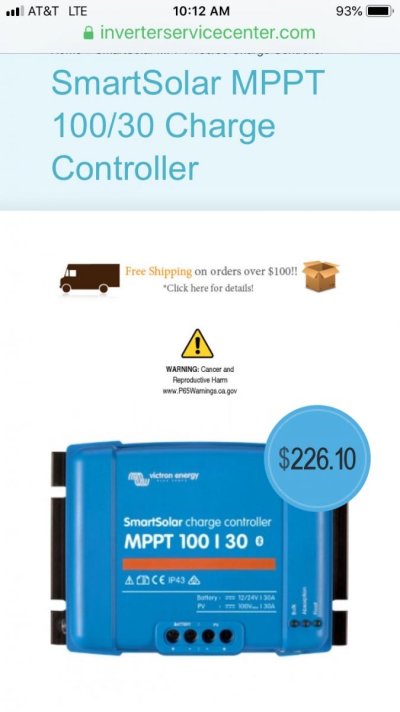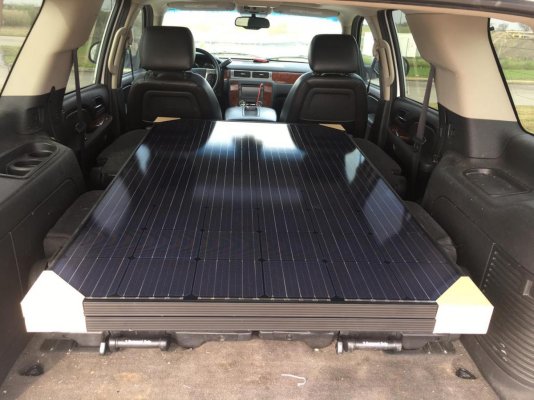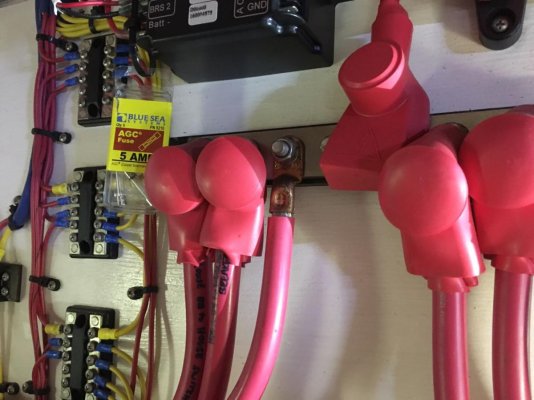I guess it is worth a few words to explain the location of the circuit protection thing further...
Placing it close to the bus or battery provides the most protection, because it protects both the wires and device. So, if a hot wire chaffes and shorts to ground along the run, you are still safe.
Placing it up by the device or panel makes it easier to shut off, turn on, check, and reset -- but protects only the device, not the wiring. And many (not all) devices have built in fuses or fusable linksbor even breakers, making an external one near them somewhat redundant.
In my own boat, I have fuses on the batteries (Blue Sea 2151) near the terminal block rated for the wiring...and the breakers at or near the panel rated for each supply or load. I like the ability to turn things off and wiring a breaker is almost as east as wiring a switch, I think.
This is super true with supplies rather than loads. These are different. If a solar charger, power charger, or inverter goes wonky, you really want to be able to turn it off, be sure it is off, and be sure it stays off, before it boils your batteries.
My boat's PO didnt have this philosophy andvhad a misconfigured solar charger -- killed a bunch of house batteries and blew up (literal explosion) at least one.
If you dont want breakers near the device, and dont want to use one for a disconnect, give yourself some other way...a switch, a disconnext plug, etc. Disconnect plugs are cheap and take no panel space. At some point you'll want a convenient way to de-energize the device, I think. I know I have.
For example, when I had to open my controller to adjust the charging voltage (so float was really float), I ended up waiting to evening so a slip of the screwdriver couldnt short 20A on the panel supply side. I took that opportunity to add panel and load side breakers as disconnects.
Disconnecting load side wires was easy. But, to disconnect the panel side wires would have been above the bimini -- or inside that same energized metal box and then sliding them out of it.
...could have done it live. Work live plenty. But, I avoid it when I can. Statistically speaking. Reducing exposure keeps me and equipment safer.
Any rate, hope this helps.







